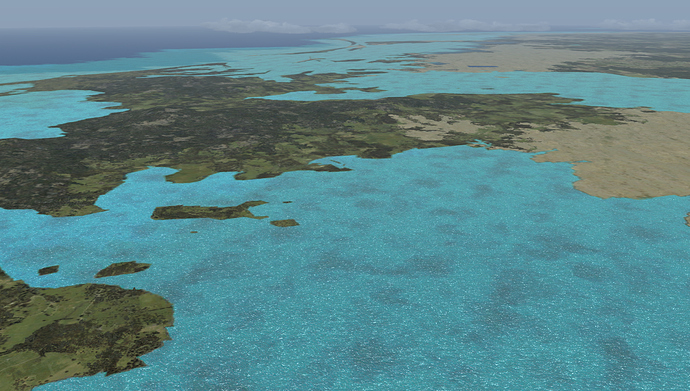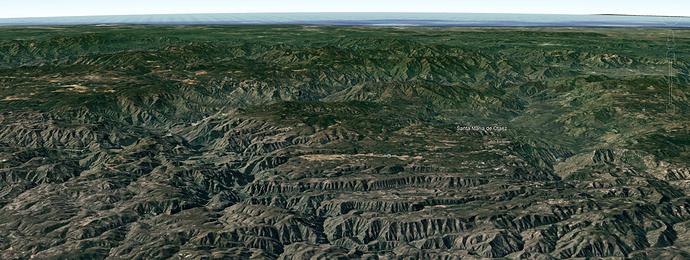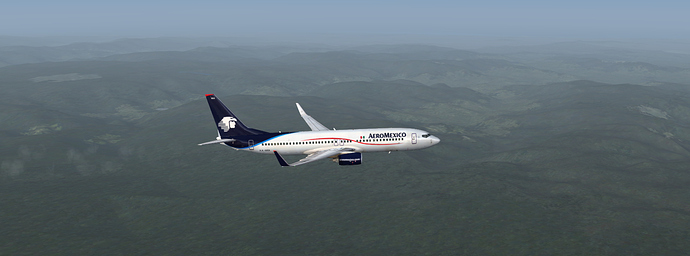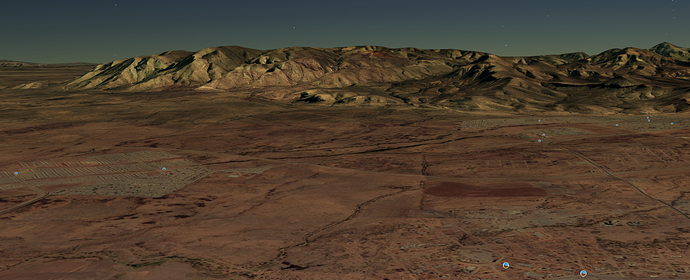All is in the title! Other simulators do perfectly the job at 40.000ft.
I already fly with airliners in the sim…?
EDIT: Quite predictably I might add.
What is the purpose of this thread?
Because they are fun.
To know which is the interest to fly at 40.000 ft.(with fs2020 of course) Maybe the newness is what we see under the plane?
The same why people ask for an autopilot in the Extra.
I dont know why I like flying airliners, I just do. I’ve always loved speed (not that you can tell at 40K up).
I just purchased the MB-339 and have spent the best couple of hours I’ve yet had in MFS 2020 low flying in the lake district and buzzing Castles in North Wales. Awesome fun!! 
I don’t get it. Maximum altitude is determined by technical (ceiling height) and organzisational (traffic) limits. What’s your point?
Oh i think I realize what the OP is asking: “Why would you buy this sim instead of another, just to fly at FL400 all the time (when all sims look the same from that altitude).”
My answer: Sims don’t look the same from FL400. If you’ve ever flown in Mexico, you’ll notice that the land class and terrain is abysmally lacking. Just going to google earth, you can see far more personality in the terrain features (where FSX just represents forest with rolling hills).
Not to mention, we don’t just fly at FL400 all the time, the cruise is one portion of the flight but there’s a magical feeling to the successful departure and arrival, which really makes you feel a level of accomplishment. And the terrain at some airports can provide interesting challenges for departure and arrival.
I was about to type something similar, once I took the OP’s question to be the same as you interpreted it. On face value the question seems somewhat understandable. Although I was going to go for a more pithy response of, “We also taxi, take off, climb, descend and land those airliners in FS2020” 
Other sims look ■■■■ at 40,000ft.
As a newbie, I have started off with the Cessna 152 and 172 just to get a feel for the basics. Over recent days I’ve been learning the basics of the A320 thanks to some excellent YouTube videos by A320 Sim Pilot and P Gatcombe. For me it’s the challenge of understanding the systems and mastering control of the aircraft. AP issues aside, it’s really satisfying getting the thing in the air, navigating to your destination and landing. I’m still getting the hang of landing but I’m enjoying it immensely.
I expect the smaller aircraft will remain my main interest but I’ll keep coming back to the airliners just for something different. Whilst you can cruise at FL400, I tend to stay below FL100 so that I can enjoy the scenery along the way.
Google earth view:
FSX view:
Google earth view:
FSX view:
Google earth view:
FSX view:
I hope the message is starting to come through that all sims are NOT the same from cruising altitude…
Yes, of course I am Ok with this particular feeling when instruments flights/ landings are perfect. I’m not a newbie, I started fs with a Commodore 64 and I have recently moved away from P3D 4.5. But I’ve just tried to say that such a representation of the landscape makes me flying now rather at 3500 ft. If I want to fly in airliners I go back to P3D and Pmdg. I hope Fs2020 will be stabilized soon and able to use Asobo’s Boeing or Airbus with all operational functions, without all these ‘Inop’ pop-up. Best regards
For the challenge of powering up an aircraft from cold and dark, taxing, taking off, lining up and landing, taxing to the ramp and shutting down.
Going from A to B @ mach 0.8 at 40K feet is not a challenge.
Exactly! It’s FL390!!!
But jokes aside, I personally like the overall experience of going from cold & dark to securing the aircraft at the destination gate. Heck, I would even enjoy being in a traffic jam on a JFK taxiway. Unfortunately there’s not enough traffic for that. I’m even larping the exterior walkaround with the camera drone.
Yes, cruise can wear on a little but that might also be the case in real life. Unlike real pilots I can hand the radio over to my PM and do some household chores.
Also, at others already stated - the satisfaction of getting to the destination gate with (almost) no mistakes and sucessfully steering around any problems along the way.
Some days ago I messed up fuel calculation so I had dual engine failure mid-flight (which I realized a bit late - I hung out the laundry) and had to relight both while avoiding to crash. It was exciting. I think I’ll try some real failures shortly.
Autopilot in the extra that did make me laugh!!!
Why Google Earth instead of MSFS?
Because I took those screenshots back in July. I haven’t had time to see what they’re like in MSFS but I would expect it’s far closer to the GE representation than the FSX representation. Especially considering that there’s satellite imagery of the area in question, and terrain data has higher resolution.
I’m not sure how old you are, but commercial aviation used to be very different. The Boeing 707 and the Douglas DC-8 ushered in the age of jet airliners in the United States in the late 1950’s and aviation changed virtually overnight. My Dad started with United Airlines in 1966 and was part of the last class to complete Basic Flight Officer Training on the DC-6 (which, if you are not familiar, was a four-engine piston airliner). The dawn of the jet age was a bit of wild-west. Flight crews had to make the transition from slower piston aircraft to much faster jets. They were flying farther, faster and higher than ever before and many of the physical flying aspects were foreign. Some pilots chose to retire because they simply couldn’t make the transition. Not only were pilots learning how to adjust to those new requirements, they were still dealing with old-fashioned navigation aids, lack of radar coverage, and short runways. Dad was still flying NDB approaches when he upgraded to Captain on the Boeing 727. Infra-structure-wise the United States wasn’t exactly ready for the jet age when it came around. There was so much learning going on all of the time–and some of it was tragic. For example, the crashes of Eastern 401 and United 173 (among others) resulted in requirements for pilot training in Cockpit Resource Management. Delta 191 brought the science of understanding micro-bursts to the forefront. PSA 182 resulted in the development of the modern terminal airspace system. All of this was happening in the public eye. At the time, the profession of airline pilot was respected and admired. That respect was well earned. Shooting non-precision approaches to minimums in the dark with primitive analog systems, and landing on short runways in some random corner of America was not for the faint of heart. The responsibility was immense. As a kid at the time, I thought airline pilots were just short of gods.
Up until around the mid 1980’s, flying as a passenger was fairly glamourous. The airlines were strictly regulated until 1978 so flying was expensive, but customer service was very high. People would dress up when taking a flight. Coach was not the cattle-car experience that it is today (seats were far more comfortable and the food was much better) and First-Class, while lacking in today’s innovative technologies, was very personalized and featured outstanding dining (and sometimes lounges). Airlines were always giving out free stuff–even in the back you could get playing cards. Kids would get pilot wings or stewardess wings. Airport security existed, but it wasn’t as onerous as it is now. Probably it was just because less people were flying. Anyway, flying as a passenger was an enjoyable experience and as a kid, it felt like a real privilege to be able to take a trip in a jet aircraft.
That all started to change in 1978 with airline deregulation. The low-cost airlines opened up flying to everyone by driving fares down, but the labor battles and incessant price-cutting that came along with it were the beginning of the end for flying as an enjoyable experience.
In any case, as a kid growing up in the middle of this, especially with a father who was an airline pilot, it was impossible not to romanticize flying in general, but especially the big jet airliners. We lived in the Seattle area and United flew out of the North Satellite at Sea-Tac, so whenever we drove to the airport for a flight, our first view would be of all of the United planes at the gates. We almost always flew First Class because that was where the available seats were–one time we had the entire upper deck of a Boeing 747 to ourselves. I can remember having prime rib wheeled up to our seats to be cut, along with a wheeled ice-cream cart. Flying was always fun and something to be looked forward to.
My grandparents on my Mom’s side had a ranch in Clarkston, Washington that was right under the flight path for the KLWS ILS RWY 8 approach. Hughes Air West flew daily service to Lewiston and whenever we would hear the inbound flight, I can remember running out on the deck to watch. Air West flew Fokker 200 prop-jets and DC-9s. We always hoped for the DC-9 because, you know, jets.
Later, when I was starting down the road to follow in my father’s footsteps, I used to “smash bags” at Sea-Tac and I can remember one sunny morning watching a United DC-10 taxi out, wondering where it was bound and thinking, “someday…” As it turned out, I didn’t end up becoming a professional pilot (something that I’m now very grateful for), but I never lost my love for the big airliners.
So if you managed to read this far, to answer your question, I like flying the airliners because of the challenge entailed–both in the actual flying and in the managing of complex systems (which is why I want study-level aircraft). It is also my way to experience a path not taken, a way to relive the joys of my youth, and a way to feel a connection with my father, who passed away a year and a half ago.





